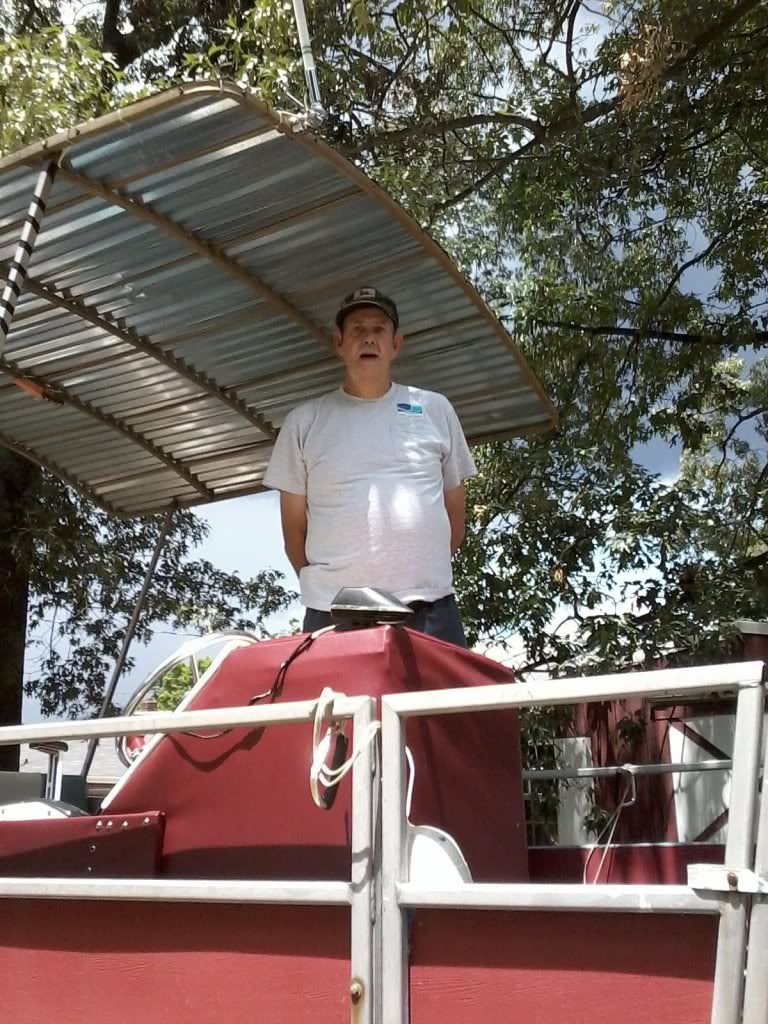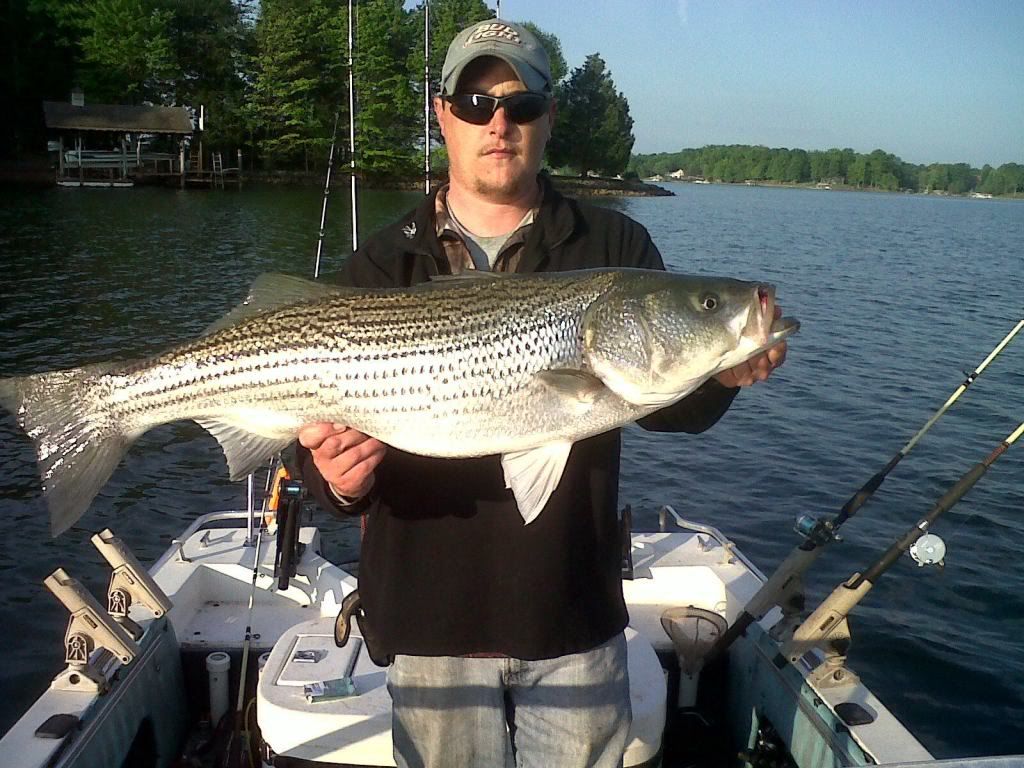Post by BentRod on Feb 5, 2014 8:40:43 GMT -5
Biologist looks for ways to grow bigger striped bass at Smith Mountain Lake
By: Bill Cochran, The Roanoke Times
Catching a striped bass big enough to send you trotting to a taxidermist shop is on the bucket list of many anglers who fish Smith Mountain Lake. Time was when the 20,000-acre impoundment annually produced hundreds of citation catches, including state records that weighed in at more than 40 pounds.
That all changed in 2003 when there was a massive fish kill. Citations dropped to near zero.
The fishery has made a nice comeback. If you don’t believe that, just take a look at the Smith Mountain Striper Club’s website/newsletter and see the pictures of members grinning and bearing hefty fish in the mid-20-inch size.
You could hope that the fish would continue to get bigger and begin flirting with the record book again, but here’s some bad news. Stripers over 26 inches are experiencing little growth, according to Dan Wilson, Department of Game and Inland Fisheries biologist in charge of this popular fishery.
Wilson believes the time has come to make a regulation adjustment, namely to boost the current 26-to 36-inch cold-weather slot limit to 30-to-40-inches. That would mean you would have to release the fish you catch that are in the 30- to 40-inch range.
“The though is we have too many fish in the upper 20’s which is reducing growth,” Wilson said.
When you get slow growth, you’d expect it to reveal itself within the first couple years of a fish’s life, but at Smith Mountain it is showing up only in fish over age 6. Wilson said he never has seen anything like it, either firsthand or in literature. That makes management decisions tricky at best.
Wilson would like to have more data to undergird his management recommendation, but a shortage of DGIF personnel has slowed research, including sampling fish population. Lacking this, it is difficult to determine what role factors like parasites and forage fish are playing.
Anglers have been telling Wilson, “The bait is great right now, better than it has been in years.” That’s no doubt the result of 2013 rain driven high-water flows.
“Higher flows equal more nutrients and they equal more shad production,” he said. Shad are the meat and potatoes of a striper’s diet.
Wilson said he welcomed the observations of anglers.
“I just need a lot more information than ‘things are good’ to realistically analyze how the forage is or is not impacting the growth. I have not done any forage sampling for a few years due to staffing limitations.”
Wilson doesn’t feel he has the leisure of waiting until he has more data in hand.
“I have no idea when that will become a reality, so I am trying to make some minor adjustments to see if it helps. I am using my best professional judgment to make management decisions to try and fix the problem.”
Last week, the DGIF board was told to expect a proposal at its April 8 hearing that would set into motion the recommendation of Wilson and his associates to boost the slot limit to 30-to-40-inches. The public would get a chance to give opinions on the proposal during a May 7-June 20 comment period; then, there would be a final vote by the DGIF board July 8. If approved, the regulation change would be effective Jan. 1, 2015.
“The proposal is to allow for more harvest of 26-to-30 inch fish to see if it helps growth by reducing competition for the fish in that size range which appears to be the bottleneck right now,” Wilson said. “We currently don’t have very many fish over 30 inches and we would like to see those numbers go up instead of continuing to decline.”
The slot limit only applies Nov. 1-May 31, when the water is cool enough to allow stripers to be released without undue mortality. No change in the size limit is recommended for June 1-Oct 31.
By: Bill Cochran, The Roanoke Times
Catching a striped bass big enough to send you trotting to a taxidermist shop is on the bucket list of many anglers who fish Smith Mountain Lake. Time was when the 20,000-acre impoundment annually produced hundreds of citation catches, including state records that weighed in at more than 40 pounds.
That all changed in 2003 when there was a massive fish kill. Citations dropped to near zero.
The fishery has made a nice comeback. If you don’t believe that, just take a look at the Smith Mountain Striper Club’s website/newsletter and see the pictures of members grinning and bearing hefty fish in the mid-20-inch size.
You could hope that the fish would continue to get bigger and begin flirting with the record book again, but here’s some bad news. Stripers over 26 inches are experiencing little growth, according to Dan Wilson, Department of Game and Inland Fisheries biologist in charge of this popular fishery.
Wilson believes the time has come to make a regulation adjustment, namely to boost the current 26-to 36-inch cold-weather slot limit to 30-to-40-inches. That would mean you would have to release the fish you catch that are in the 30- to 40-inch range.
“The though is we have too many fish in the upper 20’s which is reducing growth,” Wilson said.
When you get slow growth, you’d expect it to reveal itself within the first couple years of a fish’s life, but at Smith Mountain it is showing up only in fish over age 6. Wilson said he never has seen anything like it, either firsthand or in literature. That makes management decisions tricky at best.
Wilson would like to have more data to undergird his management recommendation, but a shortage of DGIF personnel has slowed research, including sampling fish population. Lacking this, it is difficult to determine what role factors like parasites and forage fish are playing.
Anglers have been telling Wilson, “The bait is great right now, better than it has been in years.” That’s no doubt the result of 2013 rain driven high-water flows.
“Higher flows equal more nutrients and they equal more shad production,” he said. Shad are the meat and potatoes of a striper’s diet.
Wilson said he welcomed the observations of anglers.
“I just need a lot more information than ‘things are good’ to realistically analyze how the forage is or is not impacting the growth. I have not done any forage sampling for a few years due to staffing limitations.”
Wilson doesn’t feel he has the leisure of waiting until he has more data in hand.
“I have no idea when that will become a reality, so I am trying to make some minor adjustments to see if it helps. I am using my best professional judgment to make management decisions to try and fix the problem.”
Last week, the DGIF board was told to expect a proposal at its April 8 hearing that would set into motion the recommendation of Wilson and his associates to boost the slot limit to 30-to-40-inches. The public would get a chance to give opinions on the proposal during a May 7-June 20 comment period; then, there would be a final vote by the DGIF board July 8. If approved, the regulation change would be effective Jan. 1, 2015.
“The proposal is to allow for more harvest of 26-to-30 inch fish to see if it helps growth by reducing competition for the fish in that size range which appears to be the bottleneck right now,” Wilson said. “We currently don’t have very many fish over 30 inches and we would like to see those numbers go up instead of continuing to decline.”
The slot limit only applies Nov. 1-May 31, when the water is cool enough to allow stripers to be released without undue mortality. No change in the size limit is recommended for June 1-Oct 31.




